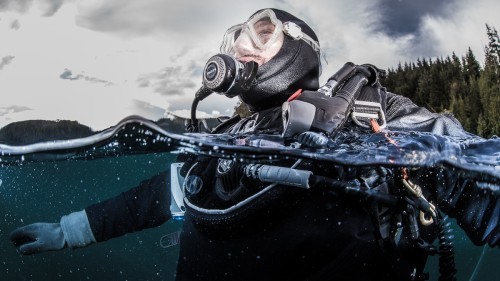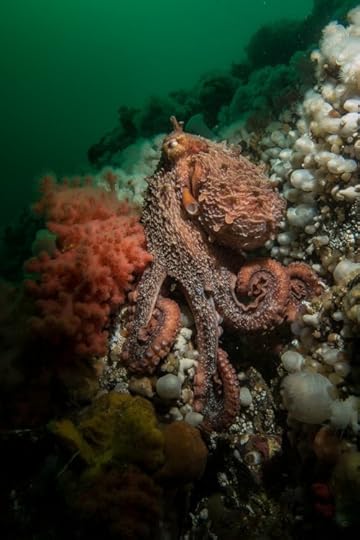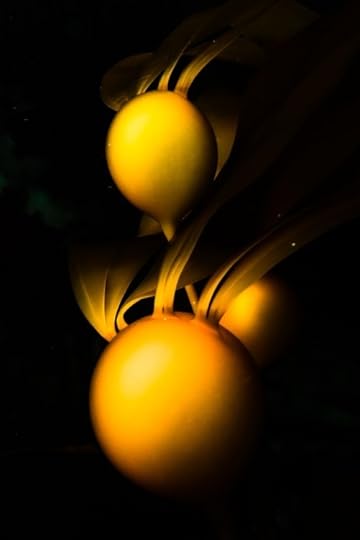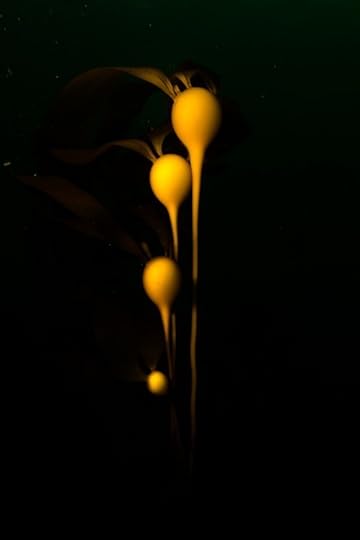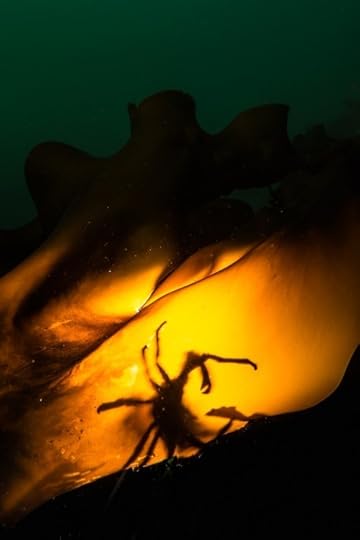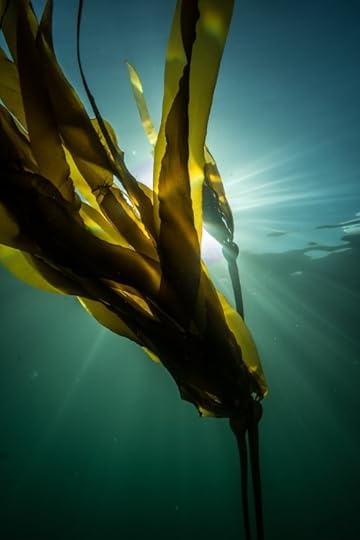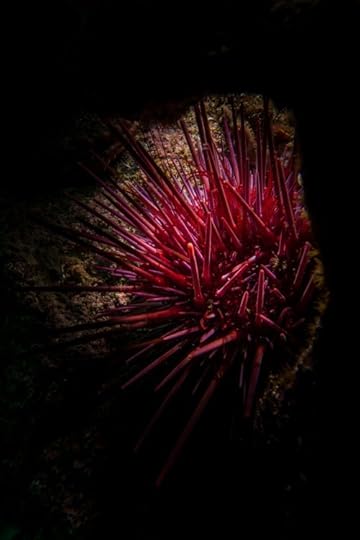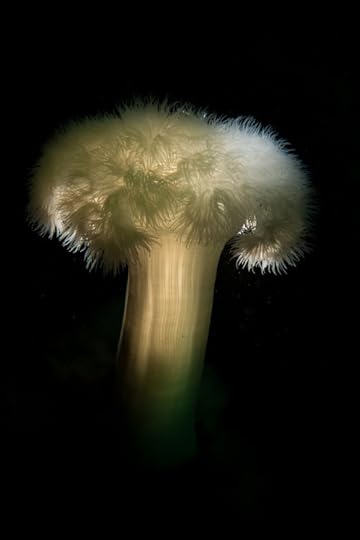David duChemin's Blog, page 17
April 29, 2015
Below
What an unforgettable week. Last Sunday I closed the door of my Vancouver loft for the last time, threw my SCUBA gear into the Jeep and headed to the airport to pick up one of my best friends. We got on a ferry to Vancouver Island and headed north to Port Hardy, camping for a night along the way to drink some wine and catch up. Our final destination was God’s Pocket, a little marine park in Queen Charlotte Strait, for a week of cold-water diving with Giant Pacific Octopus, Wolf Eels, and the abundant life under the surface of this emerald sea. (Photos above are of me, courtesy of my friend Jon McCormack)
For me the week was significant because I’ve been dreaming of taking my cameras underwater for a while and now my scuba skills are at a point where I can comfortably do that. Not so comfortable that I knew to bring the little on-camera flash for my Fuji XT-1, however, so I dove the whole week with my little Sony RX-100 – probably in hind-sight a good move as it pushed me hard to work around the limits of so small a camera, and to get comfortable. Overall it’s a great little camera and while I can’t wait to dive the XT-1, this wasn’t a portfolio trip but a learning trip.
The trip was led by Jason Bradley, with whom I became fast friends, and with whom I’ll be taking my gear to Mexico’s Isla Mujeres this August to photograph Whale Sharks. Jason is a seasoned photographer and diver and it was a thrill to be a student for a week, with no expectations on me but to play, to learn, to fail, and to do my best not to drown. We dove 3 times a day for 6 days, and it was exhausting, but exhilarating. And in between dives there was a lot of laughter and some amazing food, and not a wifi or cell signal in sight. Very remote, God’s Pocket Resort is the kind of place that makes you feel like you’re at summer camp and haven’t got a care in the world but to wake up and have an adventure.
Below are a few of my first images as I struggled to get my mind around using strobes and manage backscatter, while trying to make a compelling composition, fighting currents, and trying hard not to get eaten, bitten, poked, or drowned. The first is more for interest than anything – these Giant Pacific Octopus, though it’s hard to get a sense of scale, are huge. Such intelligent, curious, graceful, and other worldy creatures, they can have a wingspan up to 30 ft, though 16ft is the average.
Returning from the trip I drove to my new home in Victoria and the last two days has been a mad rush to unpack boxes, arrange my office, figure out internet, and get as close as I can to normal life, which is why it’s been longer than usual between posts. I’ll do my best to keep current but you could see me a little less for the next week while I settle.
April 19, 2015
Back to Sucking.
This weekend I’m off to the northern tip of Vancouver Island to dive in the giant kelp forests with sea lions and octopus. I can’t wait! After a year of taking SCUBA courses and, forgive the pun, immersing myself in a hobby more bewildering than even photography, I am finally taking my cameras into the water and it feels like going back to school. Not back to grade 12, either. Back to grade one. Back to clumsy. Back not to pencils but to crayons. The thick ones. Back to “I don’t know what the hell is going on.” Back to absolute beginner. Back to serial failure. Back to fear and a complete lack of what is familiar and comfortable. Back, with apologies to my mother for the crassness of the colloquialism, to sucking.
I don’t mourn this. It’s not a negative thing. Hard things are not the same as bad things and this is the only path I know to move forward in this craft (and life for that matter). Knowing my place in this new school makes me pay attention. Failing teaches me faster. It opens my eyes. It helps me see new possibilities. It is a blank slate. It is not a place of weakness but openness. I haven’t been this excited in ages. Nor as terrified.
I think sometimes we get so distracted by the felt pressure to succeed fast. To be masters straight out of the gate. What else explains the proliferation of workshops offered by people whose very first camera was a Nikon D700? I admire the moxy, and it’s true, there are some true prodigies out there, but for the love of light, can we all just be a little more OK with the journey and in less of a rush to hit the finish line? My god, are we ever in such a hurry.
When I was in comedy we often said of opportunities like Open Mic nights that “everyone needs a place to suck.” We all need a classroom where we’re the least experienced and wearing the dunce cap. Not for the sake of humiliation, but for the recognition that for whatever exams we’ve aced in the past, they’re not what will lead to our best work in the future. Challenge does that. New adventures and curiosity do that. We make photographs – indeed all art is made – in uncertainty. Uncertainty that it’ll work out, that it’ll express our vision the way we hope, that it’ll be well received, or that we’ll even be remotely good at it. I know of no better way to get comfortable with that uncertainty than to find a teacher to take us into new territory that has almost no common ground with our comfort zone.
That’s where I’m at now. And I’m not being modest. I wish I were. I just got back from Cancun and the photographs I made underwater there are truly, un-redeemably bad. This is my place to suck. There’s no shame in that. The shame is in never trying, in not being open to learning, and in showing up for the first day of class expecting to know it all before the lessons start. I don’t remotely know if I’ll be good at it, if it’ll prove to be what I hope it is, but man, am I excited to see if it leads somewhere. And if it doesn’t, I’ll have spent time doing what I love – which is way more about play and discovery and being in wild places than it is about making something others think is great. What freedom that is.
Wherever you’re at in the process – keep at it. Enjoy the places you have to fail in safety, to create truly bad work, and to be unashamed of it. There’s freedom there. Where there is no freedom, and in fact where there are only toxins for the creative spirit, is in expecting to find mastery without taking the hard road of learning that gets us there. A road, I might add, on which we are all walking together. Sure I might be a little further ahead of some, but there are others still further ahead of me to whom I look for light, and others steps behind you who look at you with envy. Doesn’t matter if the view from where we are is beautiful and meaningful. Look at this as an endless journey of discovery and you’re golden. Look at it as a race and you might as well stop now.
April 16, 2015
On Real Photographers
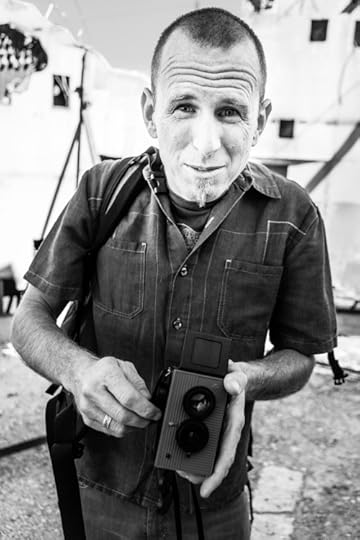 My friend, and inspiration, Chris Orwig
My friend, and inspiration, Chris Orwig
My first experiences of being part of a group of my peers did not go well. My memories of being in school are mostly filled with my efforts to fit in, and the efforts of others to keep me out. The new kid. The smaller kid. The kid with the funny name. So I come honestly by my desire to see others included.
So when I hear people complain that “now everyone has a camera and suddenly everyone’s a photographer” I hear the same old, fear-driven, mean-spirited, zeitgeist of the schoolyard.
The same craft, beautiful for it’s democratic nature, that admitted you, and admitted me, will admit others. And with the same tools we picked up with such wonder, those others will make photographs. That’s what cameras do. And it’s what people who own them do. And they will, in that moment, become photographers: makers of photographs.
They are not faux-tographers. They are not necessarily “just camera-owners”. Neither are they DSLR-monkeys, or whatever other pejorative seems clever at the time. Shame on you. Shame on us as an industry.
We’re so fond of definitions and categories. We need them. Without them how would we exclude those who threaten us, threaten our living, or our artistic sensibilities? Have you ever noticed how conveniently those definitions always include us, how the borders defined by the exclusion they map out seem to change in relation to the way we change? We are always in. They are always out. Isn’t it suspiciously convenient that we get to draw the line?
It used to be that being a Photographer-with-a-capital-P meant something. Let’s not kid ourselves, though, it did not mean we created quality work. Mediocrity has plagued us as much as it’s plagued every other craft out there. No, it meant – at a minimum – that we had expensive gear, some experience, and the knowledge to combine those. I’m talking about the professionals here. And we had scarcity on our side. That, my friends, is what has changed. And now we have to compete – those of us that are gluttons enough for punishment that we want to do this for a living – on the same ground that the rest of the world has to compete: value. (Not price. Value.)
Still talking to the pros here: digital did not kill our business. Our failure to respond to shifting market conditions did. Stock did not kill our business, our failure to adapt did. Free did not put us out of work. Our failure to provide value did. And while the photographers I hear complaining about others undercutting them are busy shopping on Amazon (meanwhile, nearby, one bookseller says to another: Amazon is killing my business, it’s not fair!) and between rants about micro-stock killing their business, they’re downloading free digital content and royalty-free stock music for their slideshows in a separate browser window.
Look, I feel your pain. I do. But can we all, please, drop the entitlement? It’s not getting us anywhere. It’s not putting food on the table. It’s taking up air that could be used to engage that creative brain of yours to be as creative with your business and the finding value for your audience, your market, that has nothing to do with the fact that you own a camera and know how to use it. A rising tide floats all the boats. If it doesn’t it’s because your boat has a hole in it. Stop pissing into the water and yelling at the winds and fix your boat. Careen that ship immediately, scrape the barnacles, plug the holes, and get back to sailing as best you can.
The arguments are wearing thin. They’re made from very human places, I know that. Made from the fear that others will surpass us. Made from the fear we’ll be overlooked, or the fear that, if we’re honest with ourselves, we were never as noticed as we’d hoped in the first place. I get that it’s wildly frustrating when someone looks at your work (at my work! The photographs I poured my heart, and 30 years of trial and many errors!) and says, What a good camera you must have.
And we respond. We say no one’s a chef just because they own pots. We say no one’s an author just because they use a typewriter. And we pat ourselves on the back for our cleverness. I’ve done it too. But while it makes us feel better, it’s precious and specist and doesn’t recognize its own glaring lack of humility. Just owning a camera and using it to make photographs doesn’t make you a photographer? Really? What do these new photographers have to do to cross our magic line? Make photographs we like, that match our changing standards? Make photographs for as long, or longer, than we have? Where’s the line? Who gets to decide? My God I hope it’s not us, because too many of us are proving ourselves to be self-protective, petty, exclusionary, and elitist. Lump me in with the faux-tographers, because they just seem to want to make photographs. I bet they’re enjoying the journey.
Being a photographer doesn’t mean you create good art. True. But then neither does having a business card with the word professional.
Our categories are useless. Harmful, even. They separate us. They keep us siloed and cut off from generosity and openness and collaboration. They keep us focused on our own “qualifications” and not on the audiences and markets we should be finding new ways to serve, to inspire, to connect with. Our scarcity mentality is hurting us. It’s stopping us from being creative about making a living. The world owes us nothing, which is hard to accept when we’ve paid for a degree, invested in gear, or bought business cards, only to find out the universe doesn’t give a damn, and cares only about what value we bring.
I am a photographer. I make photographs. I have since I was 14. You may not like them. You may have very particular feelings about whether they are or are not art. But, friends, we can do better than defining for others what they are not. What I wouldn’t give to stop with the further qualifications – professional means nothing. Amateur means nothing (it should). The only thing that means something in this context is your work. That you do your work. That it excites you, that it moves you, that it does what you hope for it, and that – for most of us – it touches a wider audience. Looking at others and putting them into the boxes that make us feel better about our art, or boxes that cast them as the scapegoats for the fact that we’re not succeeding the way we wished we were, won’t get us a hair’s-width closer to better art or better business.
This is an opinion piece. You might not agree with it. The comments might fill with the inevitable “Yeah, but…!” Fine. These subjects can be deeply emotional, and sometimes that comes out in less than graceful ways. My regulars are respectful and kind people. But the nature of the internet is that the rooms are open to all. Comments are open. But this is my blog – my living room – and I set the rules: no respect, no kindness, no comments. I’ll delete your ass if you’re not compassionate and constructive. This post is an argument for inclusion, renewed creativity, and an abundance mentality – if you want to argue against that, check out WordPress.com where you can get your own blog. I’m in the middle of moving house and start travelling soon, so please don’t come to pick a fight – my lack of response will only give you an aneurism. Go make photographs while you wait.
April 15, 2015
My Favourite Magazine
 Being its editor-in-chief, it’s hard not to be unashamedly biased about this magazine . Each issue gets better and better and with each one I’m more sure we’re doing something beautiful, something full of value. It’s ad-free, and its circulation is still on the “cult-following” side, which means this is more a labour of love than a good business model but we do it, like we do all our publications, For the Love of the Photograph. I hope this issue brings you insane inspiration. Keats famously said that education isn’t so much filling a bucket as it is lighting a fire. I think we can do both.
Being its editor-in-chief, it’s hard not to be unashamedly biased about this magazine . Each issue gets better and better and with each one I’m more sure we’re doing something beautiful, something full of value. It’s ad-free, and its circulation is still on the “cult-following” side, which means this is more a labour of love than a good business model but we do it, like we do all our publications, For the Love of the Photograph. I hope this issue brings you insane inspiration. Keats famously said that education isn’t so much filling a bucket as it is lighting a fire. I think we can do both.
Because she is mostly responsible for the issue-by-issue creation of this beautiful magazine, and I have the joy of reading it and taking credit for it, I want to use what my partner Cynthia wrote about this issue:
Issue 12 of PHOTOGRAPH magazine celebrates diversity of expression, from imaginative portraiture, to the sensual canals of Venice, the solitude of dales in snow, and the joy of telling stories about oneself.
Portfolios and interviews include John Keatley (interviewed in Episode 3 of the C&V iTunes Podcast), who lets us in on the behind-the-scenes nerves and excitement of photographing celebrities, and what it takes to come up with ideas to keep portraits interesting and entertaining; David duChemin, who opens his heart—and his portfolio—about his ongoing photographic Venetian love affair; Doug Chinnery, who explains why sharpness is overrated and that there are no rules (or police) in photography; and the Instagram stylings of Pilar Franco Borrell, who—despite her claims of “being a bit of a mess”—creates light and fun photographic stories in which she is often the main character.
Regular contributors John Paul Caponigro, Michael Frye, Guy Tal, Chris Orwig, Martin Bailey, Piet Van den Eynde, Adam Blasberg and David duChemin express themselves with articles on discipline, position, knowing where to stand, letting go of perfectionism, choosing risk, metering modes, the evolution of a portrait, the power of persistence, and creating a presentation folio. PHOTOGRAPH magazine strives to provide an inspirational and educational showcase that goes beyond f/stops and so-called conventional thinking that you “must” do anything in this craft. At just over 230 ad-free pages, our goal remains to deliver thought-provoking, high-quality value in photographic education.

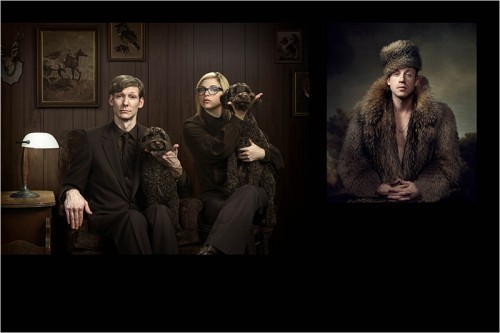
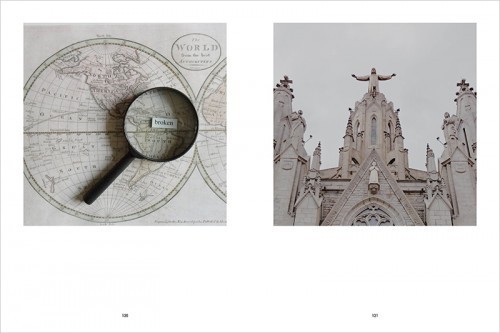
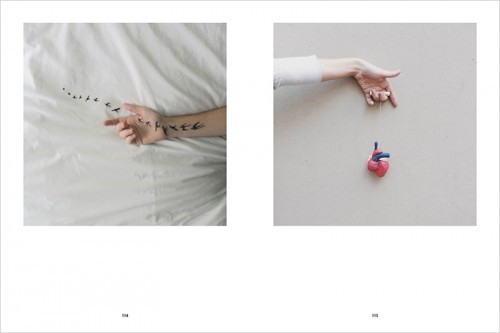
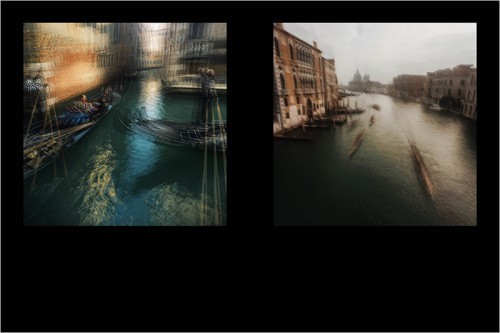
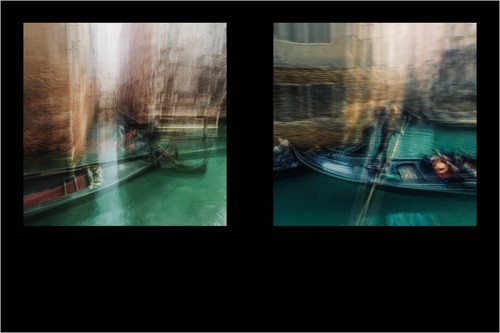
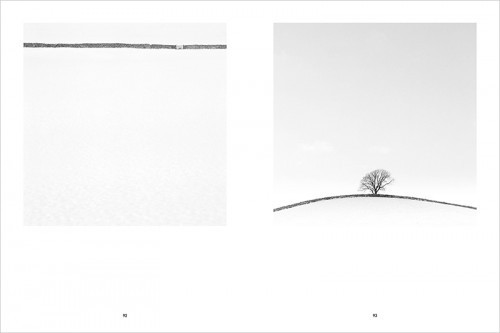
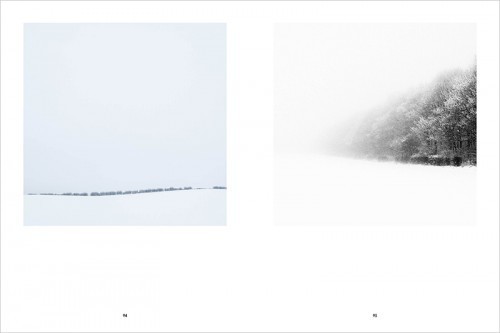 Get Issue 12 of PHOTOGRAPH this week and save 20%. Yours for only $6.40
Get Issue 12 of PHOTOGRAPH this week and save 20%. Yours for only $6.40
April 14, 2015
You Matter More
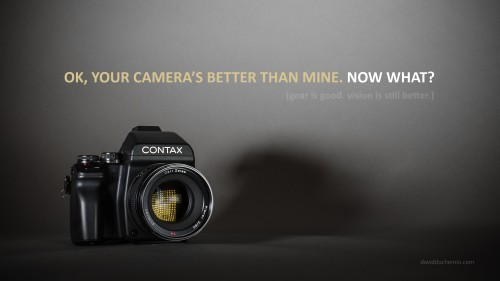 Feel free to click on this and download the desktop wallpaper version.
Feel free to click on this and download the desktop wallpaper version.
I should have known better; I should have known that I can’t just say, “we give our cameras way too much credit for their part in the photographic process,” on social media, toss it out over left field without further commentary and not get some yeah-buts and some push-back. My bad. I should have known that there will be those who rush to the defense of technology without hearing what I’m actually saying.
So. Ahem. Let me be less brief (and please take this somewhat light-heartedly, no matter how seriously I mean it). Your camera matters. Ok? It does. And we all make photographs for different reasons. Some make them because they like to perfect a technique or play with a technology. I get that. Knock yourself out with your technique and technology. But no one is going to look at your work and marvel at your mastery of dials and buttons. and think, My God, what a maestro! The things you can do with an ISO setting! Humans don’t work like that. We don’t resonate with that.
The rest of us use our cameras to make something that might vaguely be called art, if not by ourselves, then perhaps by others. We don’t do it because we’re snobs, because “Art” is better than craft, but because we hunger for more. And what we will resonate with, and what will answer that gnawing hunger, is creative expression, among other things. Story. Light. Colour. Image design. Contrast and juxtaposition. Balance and tension. The camera is responsible for none of those decisions. And so when I say we give too much credit to our cameras I am saying, with a very broad brush that might not at all apply to you but seems to apply well to popular photography in general, I am really saying this: we don’t give ourselves enough credit.
“No one is going to look at your work and marvel at your mastery of dials and buttons. and think, My God, what a maestro! The things you can do with an ISO setting!”
It’s easy to say that your 1Ds MkXIV is better than my Pentax Spotmatic, but until you tell me what better means, it’s a meaningless contention, because amazing photographs have been made with both cameras, and both have created their share of mediocrity. It’s not the camera. It’s the photographer. All of these cameras from 100 years ago until now are different and can be wielded differently. Sharpness is not everything. Nor is speed of focus. It can’t be. Because there are images from our iconic past that were made with manual focus and wouldn’t remotely have benefited from a “better camera.” OK, sure, your camera’s better than mine. Now what?
I harp on this with my students for two reasons. The first is this: if you grasp that the more compelling photographs are made, regardless of the camera, by creative, expressive people that recognize a great moment and are ready for it, that understand image design and their own voice in using it, that disregard the rules and show us the world in new ways, you will spend more time honing those things, and mastering your craft with whatever tool is in your hand. The second is this: I worry that the reason so many people put their faith in “better” technology to make “better” photographs, is because to do otherwise is to accept the responsibility for making art with our craft, and to do that means a long (but rewarding and exciting) path of mastery, and the need to transcend the tools we have because no matter what tool we have it will always fall short in its ability to express our vision. That job remains in the hands of creativity, curiosity, and – most difficult of all – a heart and mind that has something to say, and an authentic way of seeing the world. And that path, my friends, is hard. Joyful. Beautiful. Rewarding. But hard. Art is never easy. Compelling, true, vulnerable stories, are never easy.
“OK, your camera’s better than mine. Now what?”
I didn’t say the camera doesn’t matter. I said, or am trying to: you matter more. And no camera in the world will make up for our shortcomings in creativity and in the areas that the human mind and heart resonates. Upgrade all you like. Buy the cameras that work best for you and if it takes a while to discover that, or your needs change, then change the tools as you need to. None of this should need to be said. Take advantage of the changes if they benefit you. Just don’t forget that the hard work will always only ever be done by you. As good as they are, the list of things these cameras can’t do is long – these cameras remain inert black boxes with a hole, lifeless and incapable without the human heart and mind. Want to make bigger, sharper photographs with less noise? Get a newer, better, shinier camera. It should do the trick for 6 months until something better comes along. In the mean time, count how many people your images touch because they’re merely large, sharp, and clean.
“I didn’t say the camera doesn’t matter. I said, or am trying to: you matter more. And no camera in the world will make up for our shortcomings in creativity and in the areas that the human mind and heart resonates.”
Want to make more compelling photographs that resonate with others and express something authentic and personal about this world and the moments and beauty of which it’s comprised? It’ll take so much more than just a camera.
April 12, 2015
Come to Kenya with Me
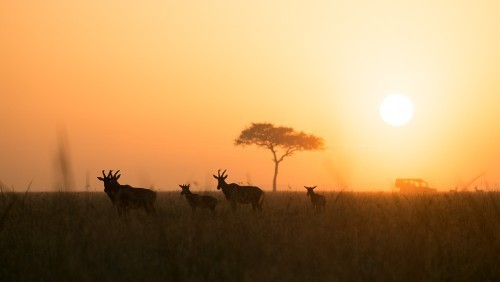
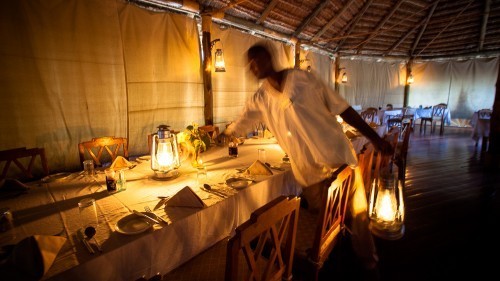
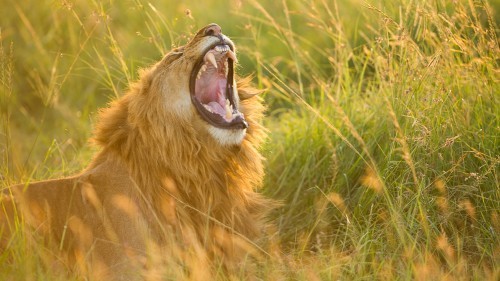
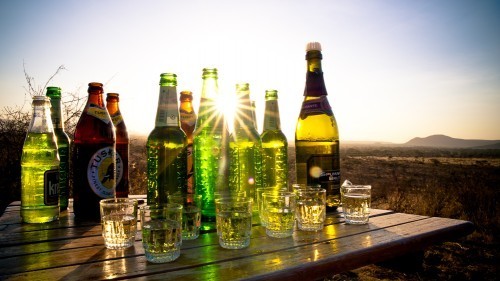
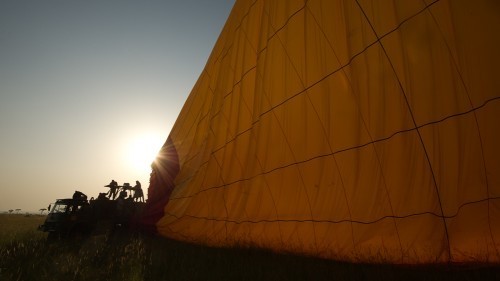 In the next 12 months, as far as I can see, there are only 3 opportunities to travel with me and 2 of those – the Within The Frame Portfolio Series trips to Venice and Jodhpur – filled up within a day of being announced. The one I have not yet announced is a trip in February 2016 to one of my favourite places on the planet: Kenya’s Maasai Mara.
In the next 12 months, as far as I can see, there are only 3 opportunities to travel with me and 2 of those – the Within The Frame Portfolio Series trips to Venice and Jodhpur – filled up within a day of being announced. The one I have not yet announced is a trip in February 2016 to one of my favourite places on the planet: Kenya’s Maasai Mara.The dates are February 1-11, 2016. We’ll meet in Nairobi and then take a couple days to see Lake Naivasha and Lake Nakuru before driving through the great Rift Valley to the beautiful grasslands of the Maasai Mara. There we’ll spend 2 days in the southwest at one of my favourite camps: Kichwa Tembo, and 3 days in the Northern Conservancy at Porini Lion Tented Camp. Some of my best days alive have been bouncing around the mara, photographing elephants, giraffe, zebra, lions, and others of the incredible life on the savannah. There’s a quality to the light there, the air, even the passage of time. With all my heart I love this place, and long to return. I’m literally counting days. And I’d love to share it with you.
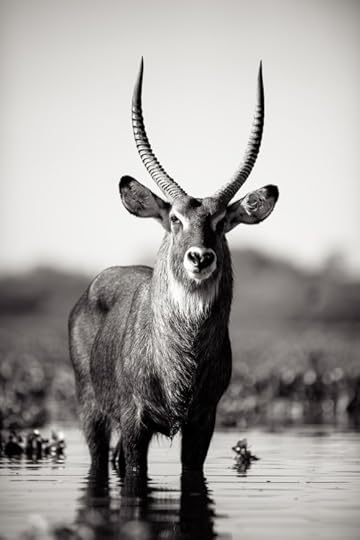
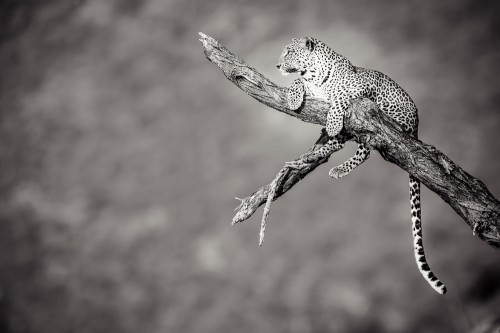
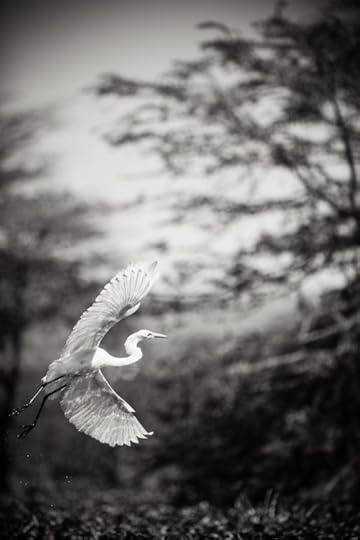
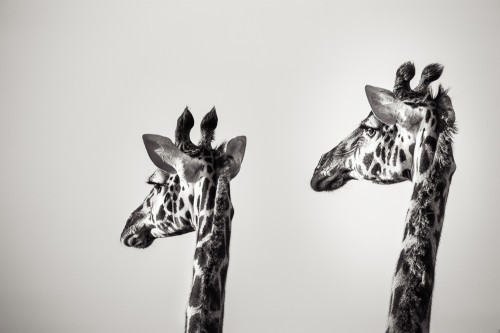
This is not a workshop, per se. It’s a shared travel experience. I’ll be your guide, but mostly in this small group of a dozen or so, I hope we’ll be friends. There will be plenty of time for conversations, great meals, and sharing photographs and techniques.
If you’ve wanted to experience this part of Africa, or photograph beside me, or sit and talk about our craft with a drink in your hand as the sun goes down behind the iconic Acacia trees of the savannah, this might be as good a chance as you’re going to get.
To see the complete itinerary, organized by Socially Responsible Safaris, and to inquire or book, check out the website.
April 7, 2015
The Visual Toolbox is Shipping!
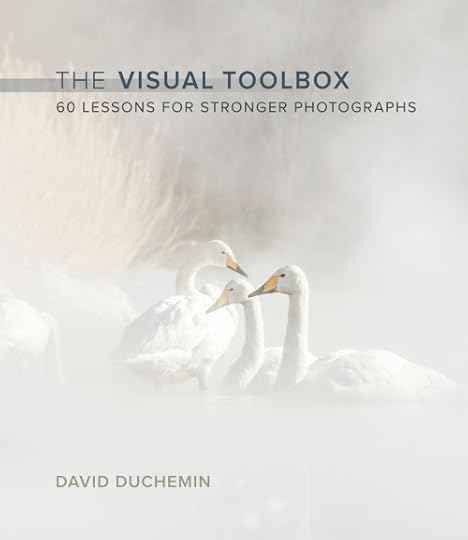 I’m speaking at a creativity conference in Mexico this week, but I wanted to let you know The Visual Toolbox is now shipping! You’d think this would get old somehow, but the release of any new book is exhilarating, even more so when it’s a printed book. If you’re at the What If! Conference, come have a celebratory drink with me.
I’m speaking at a creativity conference in Mexico this week, but I wanted to let you know The Visual Toolbox is now shipping! You’d think this would get old somehow, but the release of any new book is exhilarating, even more so when it’s a printed book. If you’re at the What If! Conference, come have a celebratory drink with me.
When I wrote The Visual Toolbox I wanted to take a step back from discussions of vision and expression, and start over at the beginning. The question that drove me was this: if I were teaching a year-long course on photography, what would it look like? It would look different, that much I knew. Not because I had anything different to teach – photography hasn’t fundamentally changed for a long time – but because I continue to feel that we’re missing something important when we focus on technique to the exclusion of vision, expression, and aesthetics. We’re still teaching as though “how to use a camera” is the same thing as “how to create a compelling photograph.” But it’s not.
The Visual Toolbox, 60 Lessons for Stronger Photographs, is the book to which I wanted to be able to point new photographers, but it didn’t exist, so I set out to write it. The book is over a year, if you break into a chapter a week, of lessons that cover steps on the journey from the basics of technique, to exposure, and issues of composition, storytelling, and creativity. Of course many have gone through the book much faster, but either way I believe this will change the way people learn photography. It will, I hope, create makers of stronger photographs, not just competent users of cameras.
I wrote this book initially as an eBook and it quickly became the best-selling title on CraftandVision.com. And eventually, with so many requests for a printed version that people could make notes in and underline stuff, we took it to Peachpit and asked them to put it on paper. I wrote 10 new chapters, added some photographs, made some changes for the better, and today it’s shipping from Amazon (though it’ll be a few weeks at least before it hits Amazon.ca, or the other international sites). You’ll be able to get it at brick and mortar stores soon as well.
If you’d still rather get the eBook version, you can get that on Amazon, or Peachpit.com which is also offering a bundle so you can get digital versions of The Visual Toolbox, Within The Frame, and Photographically Speaking, together for $58. Just look for the option to Buy Together and Save, it should be on the right side of the page.
Each time I launch a book like this I’m keenly aware of two things. First, that many of you are long-time readers and without you I couldn’t do this – thank you so much for giving me the privilege of doing what I love for a living. The second is that word of mouth is still, despite all our technology, still the best way to spread the word about things we love. If you think others would benefit from this book, would you let them know and point them to the book on Amazon? And if you’ve already read The Visual Toolbox, would you take a moment to leave an honest enthusiastic review on Amazon? These reviews are so helpful to others, and they help offset the inevitable 1-star review from the weird guy complaining that the mailman bent the cover or that there were too few photographs of cats. In advance, thank you; without you I’d have no one to do this for.
Find The Visual Toolbox on Amazon.com
Find The Visual Toolbox eBook bundle on Peachpit.com
April 2, 2015
Four.
 I’m hoping you can see the gratitude on my face. Thank you.
I’m hoping you can see the gratitude on my face. Thank you.
This is a short note to long-time readers. It’s unedited and is, simply, a reflection and a thank you.
Four years ago on Easter weekend I fell off a wall in Italy and changed my life forever. That I lived at all is wonder enough, but that I now look back on the last 4 years as some of the best, if not among the hardest, of my life, tells me a lot about what it means to be human, to be happy, and to be truly alive.
I have learned to slow down.
I have learned to live in the moment and value, with every breath, the staggering beauty and astonishing brevity of life.
I have learned to love again, and more deeply, with more laughter, than I ever imagined, though that has more to do with the amazing woman I met the week before I fell, the same one that sat with me for 4 days in hospital in Pisa, and the same one with whom I’ve shared my life since the day I met her in Genoa.
I have learned that the adventure in life is not in getting what we desire, but in pursuing it.
I have learned to laugh more, take things less seriously, and to celebrate failure because it is a more faithful teacher than any other.
I have learned to be more humanly creative, to embrace the imperfect, to love the journey despite (perhaps because of) the uncertainty of the destination.
And I have learned to be deeply, deeply grateful. Gratitude remains the best painkiller in my life.
I’m writing this because from the moment I fell and word got out, the people that have come into my life by reading this blog and my other books, started coming out of the woodwork to encourage me on. They wrote letters, sent card and flowers, and told me their names. They – you – still do. And your presence in my life is very real, even for those of you I’ve not yet met in person.
And today I walked into my massage therapists office and told her that I feel the best I’ve felt in four years. There have been surgeries, and rehabs, I’ve learned to walk again 3 times now. And I didn’t help things much by putting an axe into my leg. And I’ve got severe post-traumatic arthritis in one ankle, and one day it’ll catch up with me, but you know what, I’m not running any marathons any time soon anyways. I now walk without a limp most days for the first time since the fall. Life feels a little closer to normal, though it’s a new normal. A better normal than I ever imagined. One filled with adventure, with less fear, and with a much greater sense of how much we’re all capable of because the spark in us burns much brighter than most of us know until it gets dark enough to see it for the beacon it is. And that same spark that’s in me is in you, and if you doubt that it’s only because you haven’t had the chance for life to blow hard on the embers as things get dark. But it’s there. And it’s hotter and brighter than you know.
There’s probably a symbolism in the fact that I fell on Easter weekend, which is about new beginnings and new life, if it’s about anything – even at the most deeply spiritual, it’s about that – and I believe more now in every day resurrections and the power of light and love than ever before. We don’t usually get do-overs in life. You don’t get to hit rewind no matter how much you beg and plead. But we can make new starts, change directions, and bounce back from dark places. We can learn to walk again when all we believe we can do is crawl.
So I wanted you to know. I’m grateful. And for those of you with whom I was already on thin ice for all my poet-warrior stuff (just teach me how to make better photographs, duChemin!) I’m probably more intolerable now than I ever have been because now more than ever I believe in what we’re capable of if we’ll make the choice to do it. I believe that the beauty and brevity of life demand that we abandon this idea of spare time, and see every moment full of potential. There is no time left over. I believe it demands that we live intentionally and set the world ablaze. We can all live so much larger than we think, if we’ll abandon the smaller thinking.
So thank you.Truly. Deeply. Thank you.
You’ve helped me through these four years and given me a chance to do my art and give the world what I can.I hope in some way my work brings back to you some piece of the light you’ve given to me.
Everyone should be so lucky.
April 1, 2015
Tend the Fire

Most of us have a fire in the belly, a passion or desire that burns brightest in us. It’s the heat and energy from this fire that moves us forward, gives momentum to our projects, and authenticity to our voice. It’s one of those things, sometimes the thing that makes us feel alive. Only you know what this thing is, and it’s impossible to overstate its importance. And it’s often the first thing that gets set aside or neglected in pursuit of our enterprises, even when those enterprises spring from that very thing.
Don’t you dare neglect feeding the fire in your soul; don’t for a moment allow the embers to grow cold. It’s never worth the sacrifice.
It is possible to lose the joy, for the fire to go out, drowned in the distractions and the day-to-day stuff that seems so important. Don’t let it. Nothing is worth the price. Don’t you dare neglect feeding the fire in your soul; don’t for a moment allow the embers to grow cold. It’s never worth the sacrifice. Especially when it’s the fire in our belly for which we do these things, create our art, embark on our adventures, or begin our business.
Consider the story of the fisherman, living in a modest home on a beach in Mexico, spending his day fishing. The businessman on vacation notices how good the fishing is and tells the fisherman he could do so much more, be so much bigger. If only he’d hire some other fisherman, eventually buy another boat, and then a fleet, his business would be huge.
“And then what would I do?” asked the fisherman.
“Well,” replies the businessman,”you could build a big fishing business, then move to America and make it even bigger.”
“And then what?”
“Eventually you’d make so much money you could retire,” the businessman says.
“But then what?” asks the Mexican.
“Well then you could afford to buy a place on the beach and spend your days fishing.”
Don’t let the stuff that currently sustains what you do, and what you love, put out the fire. Make the time to do your best work for yourself, to complete your personal projects, be with your kids, to pack the tent into the truck and go to the woods for a night. Don’t let too much time pass before you jump into a lake, or go to Venice, or see the friends you love.
There’s no point making money if to do so takes you away from the very thing you want to make the money in order to do. First things first. Everyone has to eat. But tend the fire. The fire is the point of the thing, and it’s much, much easier to keep it lit than to get going again once the embers have gone dark and you’ve forgotten the joy you find in the heat of the flame.
Keep the question “Why?” in front of you. Why are you doing this? Why do you spend your days, hours, and minutes the way you do? If they aren’t directly feeding the fire, or making the fuel to keep it going, could they be replaced by something better?
Pragmatically this stuff matters. Neglect the fire and everything that makes you who you are starts to fade. Your brand gets muddy. Your value slides. And the quality of your work declines. Feed the fire, fan it to flame, and (to quote Jonathon Edwards) the world will come to watch you burn.
Tend The Fire was originally published last August on ABeautifulAnarchy.com
March 29, 2015
Time Taken

 When I encourage younger photographers to take their time it’s because we tend to be obsessed with doing things faster and too often the speed with which we do things subverts our mindfulness and creativity. It also sabotages the chance for relationships, which won’t hurt you if you’re shooting air shows, but when you’re making portraits, those relationships are everything. For me they are often the point of it all. Those relationships, whether you’re a touchy-feely person or not, can be the key that allows you the access you need to make not only an OK photograph- the one that seems most obvious (top) but something more, something special.
When I encourage younger photographers to take their time it’s because we tend to be obsessed with doing things faster and too often the speed with which we do things subverts our mindfulness and creativity. It also sabotages the chance for relationships, which won’t hurt you if you’re shooting air shows, but when you’re making portraits, those relationships are everything. For me they are often the point of it all. Those relationships, whether you’re a touchy-feely person or not, can be the key that allows you the access you need to make not only an OK photograph- the one that seems most obvious (top) but something more, something special.
I discussed this in SEE THE WORLD: NORTHERN KENYA but it bears repeating, and a couple different images illustrate it well – not only the power of relationships that get you the patience and collaboration from your subjects, but the time to notice the light and find a way to make it work. As you can see from the top image, this mother and child were siting in their home and while the top image is adorable, it’s the bottom one (in fact a whole sequence from which I’ve pulled this one) that I love most of all – the light makes it.
Slow down. We’re all in such a hurry. Pay attention. Nurture an addiction for taking your time and paying attention, and a hunger for the right light and new angles you’ve not thought of, and you’ll find your images improve in ways they never will when, moving too quickly, you seize upon only the low-hanging fruit as the best expression of a scene and move on.
Last week my friends at Saw & Mitre collaborated with me to give away a couple prints in their gorgeous handmade frames – congratulations to Dan Windsor and Kris Ryan – I’ve got emails headed your way and once we get addresses, we’ll have framed prints shipped out! Be sure to take a look at the beautiful frames from Saw & Mitre and follow them on Instagram for more chances to win framed prints from some great photographers.

